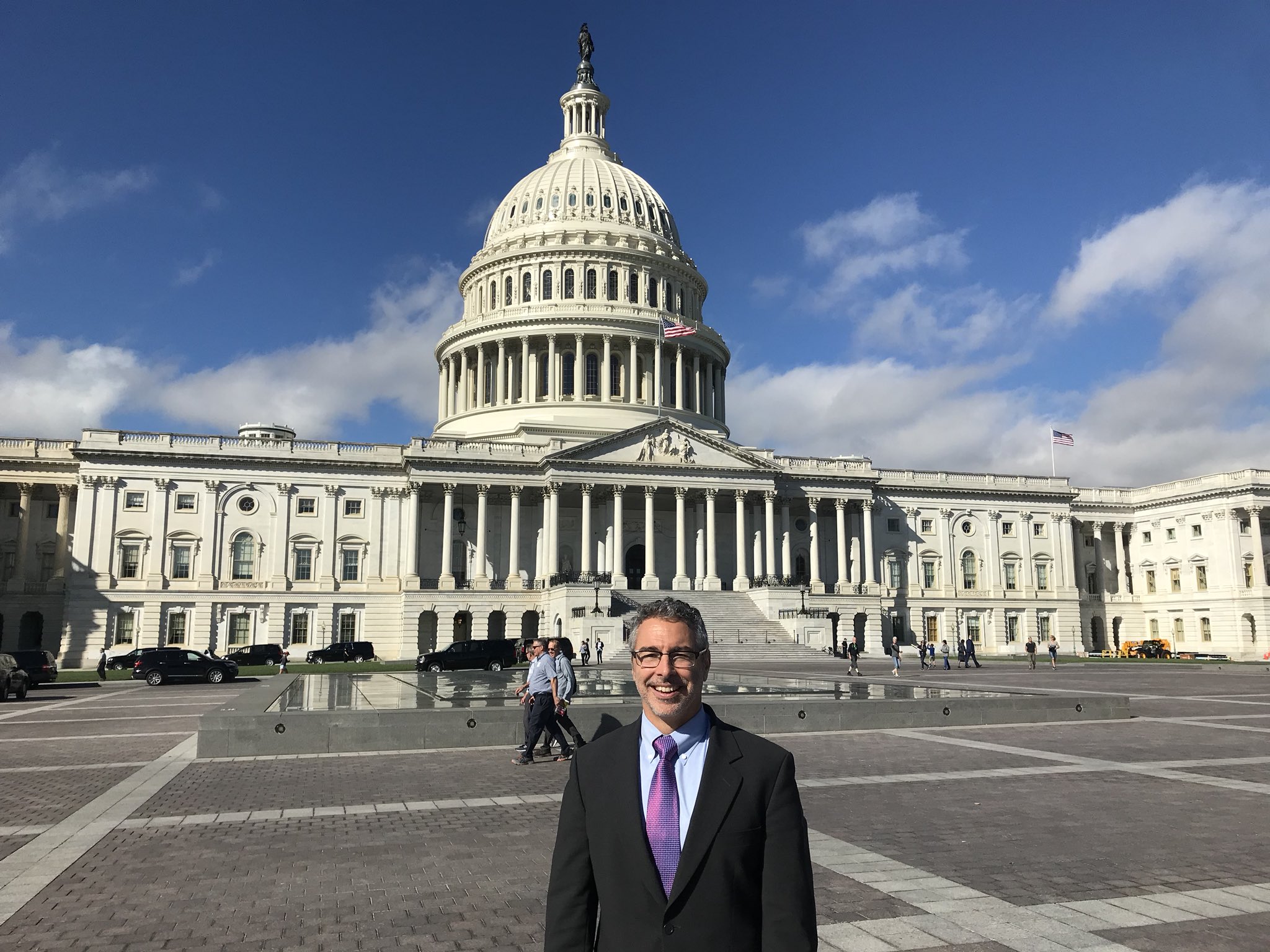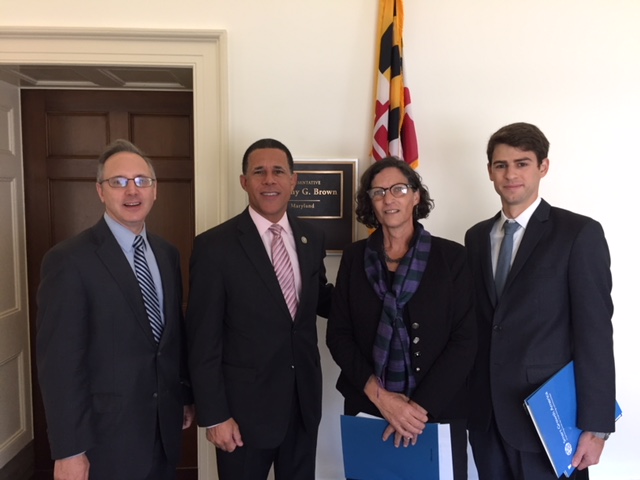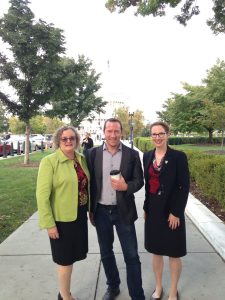
News
By Smart Growth America, October 27, 2017
Smart Growth America and the Coalition for Smarter Growth, our local DC regional partner, welcomed thirty other state and regional smart growth organizations from around the country to Washington, DC this week for their annual meeting, including a day of meeting with their legislators and encouraging them to support their efforts to build strong communities.

Smart Growth America’s coalition is made up of a wide range of groups from across the country, but at the core is a collection of groups that work intensely on smart growth at the state level. While every state is different, there’s a lot for these groups to learn from one another about the best practices for advocacy, technical assistance, and fundraising, and they’re eager to spend time collaborating with each other.
“You’re always more effective if you can get lots of people saying the same thing,” shared Pete Kasabach, Executive Director of New Jersey Future. “So by coordinating the work that we do with other states, we’re able to be more focused and effective with our outcomes.” This annual meeting allows the partners to share their successes, challenges, and opportunities, and receive advice from other like-minded organizations. They also had the opportunity to explore DC’s changing neighborhoods on walking tours of the 14th Street corridor and the Navy Yard neighborhood.
On Tuesday, fifteen members of the group gathered on Capitol Hill for a day of meetings with their senators and representatives, where they could advocate for their organization’s transportation and housing priorities at the federal level.
“The solutions that we need aren’t necessarily things that can be solved by one community, or one state,” said Jeremy Madsen, CEO of The Greenbelt Alliance. “By coordinating our efforts at the state level, we can better fix our infrastructure and environmental problems.”
After a morning briefing by Transportation for America’s Policy Director, Scott Goldstein, and SGA staff on the current state and funding of federal transportation and housing programs, the group departed the Capitol for meetings in the Senate and House office buildings.

“We come to the Hill to speak with our members of Congress because the investments the federal government makes in infrastructure and housing have a real impact on the communities back home,” explained Jack Machek, President & CEO of 10,000 Friends of Pennsylvania.
Most partners focused not just on urban, but also on suburban and rural mobility, since many people don’t recognize how much transit and paratransit programs provide access — particularly in rural areas and smaller towns. “There are large populations of senior folks who live in rural communities and are stuck at home due to lack of mobility,” Machek continued.
“Investments in transit can help take care of those populations and provide mobility options to get people where they need to go.” Greater Ohio Policy Center Executive Director, Alison Goebel, agreed, “It’s all about creating access for all Ohioans, such as those who live outside of metro areas. We want to secure complementary state funding for our federal opportunities.”
Ed note: For more on what’s at stake in the current federal budget for transit in rural areas, see this new memo from our Transportation for America program.

Nancy Smith, Executive Director of GrowSmart Maine, was encouraged to hear that all three offices she visited — a democrat, a republican and an independent — were supportive of preserving the federal programs that help support Maine’s rural communities. They also signaled their appreciation for the work GrowSmart Maine has been doing to advance smart growth initiatives across the state. Smith was lucky enough to receive the full Capitol Hill experience with a ride on the one-of-a-kind Senate subway and a private tour of the Capitol from staffers with her representative’s office.
Altogether, these state partners participated in thirty meetings throughout the Senate and House in just five hours, sharing their priorities and requesting their senators’ and representatives’ support for the work they do to build strong communities that are great places to call home.
All partners represent groups in SGA’s coalition of regional, state and local non-profit organizations. " enables us to better learn about the priorities of other states and regions. And it helps us communicate why what’s happening in California should be relevant to Congress,” shared Jeremy Madsen. Pete Kasabach continued, “Being part of a national coalition of smart growth state advocates provides an opportunity to shine a light on New Jersey Future’s work in other parts of the country. If your organization is known to engage in national issues, that elevates your prominence within your own state.”
Is your state, regional, or local smart growth organization interested in participating in SGA’s Coalition? Learn about other member benefits and apply here.
Related News

© 2026 Smart Growth America. All rights reserved
Site By3Lane Marketing








